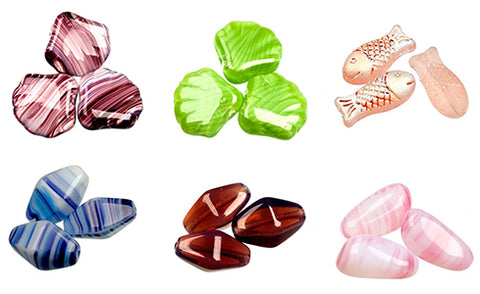The History of Czech Glass Beads in Beaded Jewelry - Part 1: Origin
Czech glass beads are considered to be some of the finest in the world. The history of Czech glass beads for use in beaded jewelry takes a few twists and turns, but Bohemian glassmaking is actually centuries old, going back earlier than 400 AD.

North Bohemia, a region in the current Czech Republic, has been the hub of European glassmaking since the 1200s - this is why you sometimes hear Czech glass beads referred to as Bohemian glass beads. Most of the items produced were for rosaries and household use, but this was soon to change.
The region of North Bohemia was perfect for glassmaking because it had an abundance of the natural elements needed to make glass, among which were sand, quartz, potash, and trees. During the second half of the 16th century, a surge of popularity in costume jewelry caused glassmakers to start creating decorative glass beads.
Fast forward to the early 18th century, when the first mold was made for glass buttons; this led to the early 19th-century invention of the first glass bead mold, which allowed mass production to turn out more beads at a lower cost. This was a great step forward because more complex bead shapes could be made and patterned canes with elaborate colors made beads of the same shape look different from each other. The result was the start of such beautiful creations as aurora borealis beads, fire-polished beads, satin beads, Picasso beads, and flower beads, all made from Czech glass. Hundreds of thousands of exquisite and unique Czech glass bead types have been and are still being produced.
Stay tuned - in part 2, we'll take a look at the village families who produced Czech glass beads and the effect of the world wars on the bead-making industry.
For a beautiful selection of Czech glass beaded jewelry, browse through our online showcase of bracelets, jewelry sets, necklaces, anklets, and even gorgeous bookmarks. Want something customized? Contact us to discuss the many ways we can make you a one-of-a-kind piece.
Photo Credit:

